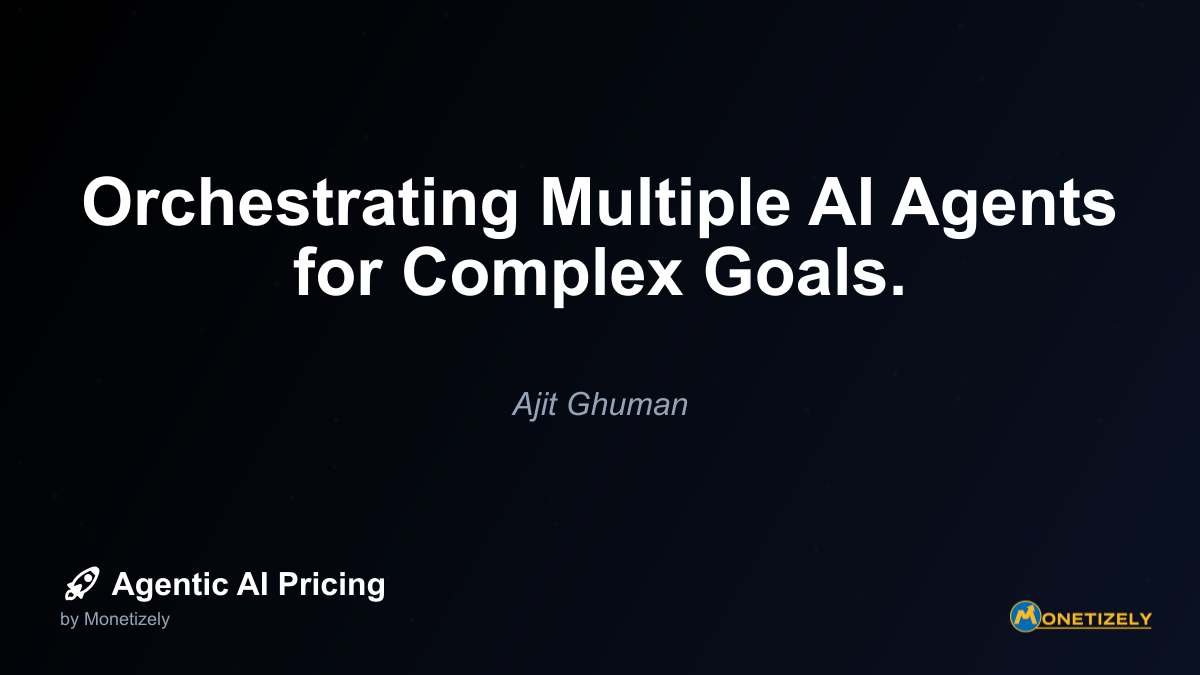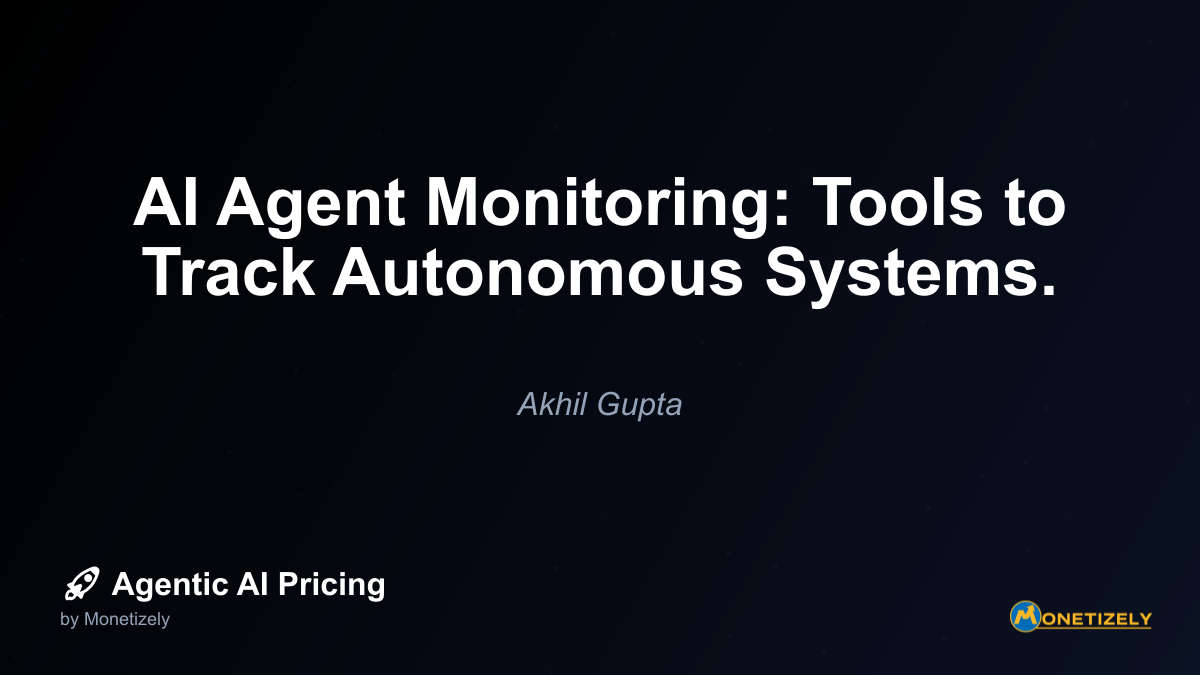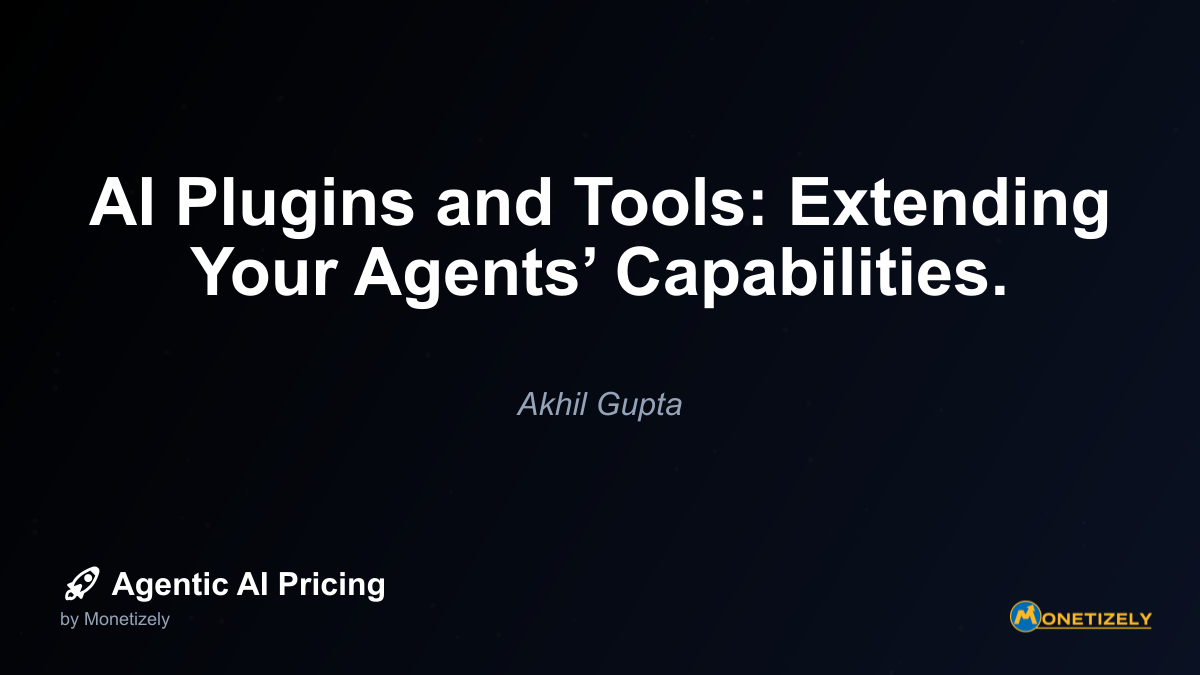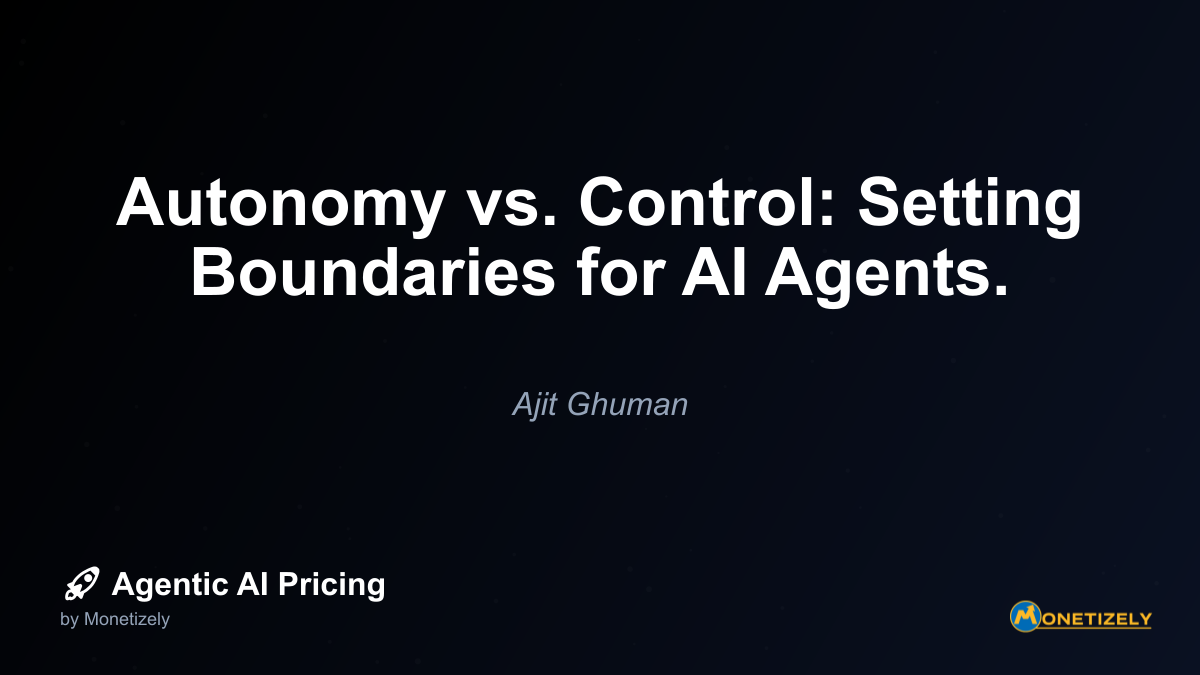· Akhil Gupta · Technical Insights · 6 min read
Automating Complex Workflows: How AI Handles Multi-Step Tasks.
AI and SaaS Pricing Masterclass
Learn the art of strategic pricing directly from industry experts. Our comprehensive course provides frameworks and methodologies for optimizing your pricing strategy in the evolving AI landscape. Earn a professional certification that can be imported directly to your LinkedIn profile.
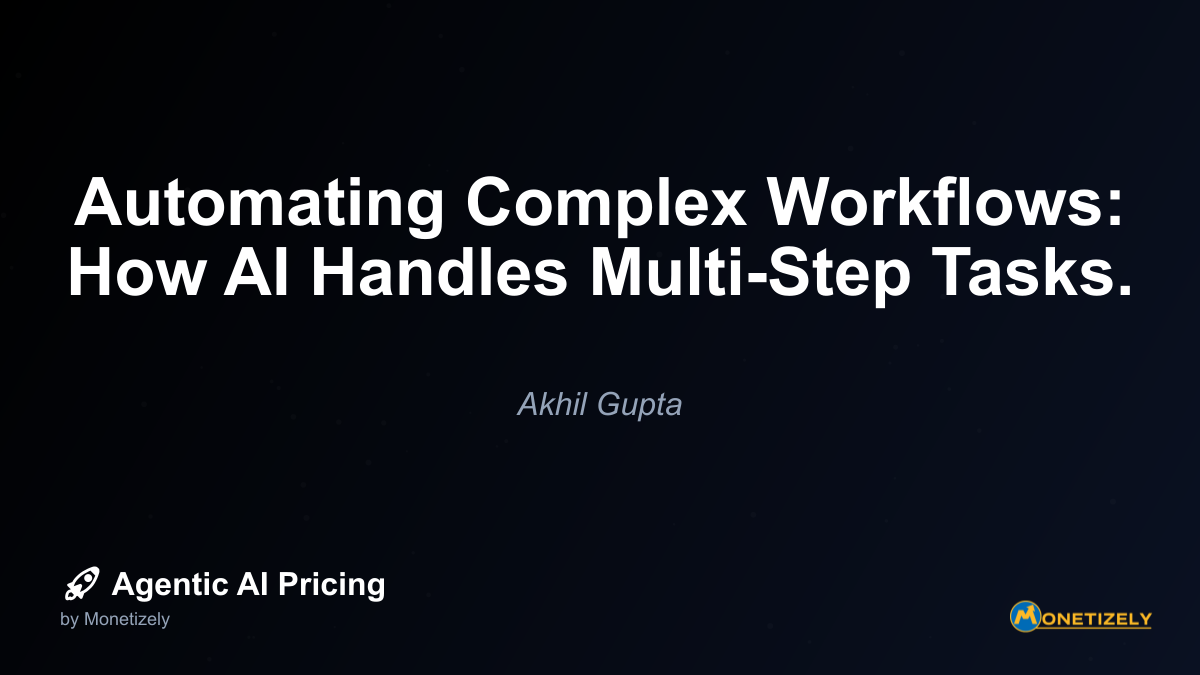
Memory Mechanisms in AI Workflow Orchestration
For agentic AI to successfully manage multi-step tasks, sophisticated memory mechanisms are essential. These systems employ several types of memory that work together:
Working Memory
Similar to human short-term memory, working memory maintains the current context and immediate task information. This includes:
- Current state tracking: Understanding where the workflow currently stands
- Recent interaction history: Maintaining a record of recent steps and decisions
- Active variables: Keeping track of information needed for the current task
For example, during a customer support workflow, working memory might track the current issue being addressed, recent customer responses, and specific account details relevant to the immediate problem.
Episodic Memory
Episodic memory stores complete “episodes” or instances of past workflow executions, allowing the system to:
- Reference similar past situations
- Apply lessons learned from previous workflows
- Identify patterns that might be relevant to the current case
This capability becomes particularly valuable in scenarios like fraud detection, where the system can reference patterns from previous fraud cases when evaluating a new transaction.
Semantic Memory
Semantic memory contains structured knowledge about the domain, including:
- Business rules and policies
- Procedural knowledge about how tasks should be performed
- Relationships between different entities and concepts
For instance, in healthcare workflow orchestration, semantic memory would include knowledge about treatment protocols, medication interactions, and standard care procedures.
Pricing Models for AI Workflow Orchestration
As organizations adopt agentic AI for workflow automation, understanding the pricing implications becomes crucial. Several models have emerged in the market:
Process Complexity-Based Pricing
This model scales pricing based on the complexity of the workflows being automated. Factors that influence pricing include:
- Number of discrete steps in the workflow
- Complexity of decision logic
- Number of integrations with external systems
- Volume of data processed
This approach aligns costs with the value delivered, as more complex workflows typically generate greater business impact when automated.
Learn more about effective pricing strategies for AI workflow automationOutcome-Based Pricing
Some providers are shifting toward outcome-based pricing models, where costs are tied to successful workflow completions or business outcomes. This might include:
- Per-completed workflow instance fees
- Success-based pricing (e.g., percentage of cost savings)
- Performance incentives for faster or more accurate processing
This model aligns vendor incentives with customer success and provides predictability for businesses implementing workflow automation.
Hybrid Consumption Models
Many organizations implement hybrid pricing models that combine:
- Base subscription for the platform capabilities
- Usage-based components for processing volume or specialized features
- Tiered pricing based on workflow complexity and business value
This approach provides flexibility while maintaining predictability for core workflows.
Explore how performance-based pricing is transforming AI workflow solutionsImplementation Challenges and Solutions
Despite the transformative potential of AI-orchestrated workflows, organizations face several implementation challenges:
Integration with Legacy Systems
Many complex workflows touch legacy systems with limited API capabilities or outdated architectures. To address this challenge:
- Middleware solutions: Deploy integration layers that translate between modern APIs and legacy interfaces
- RPA components: Incorporate robotic process automation for systems lacking proper APIs
- Progressive migration: Incrementally modernize workflow components while maintaining end-to-end functionality
Handling Exceptions and Edge Cases
No matter how sophisticated the AI planning, exceptions will occur. Effective systems must:
- Detect anomalies: Identify when a workflow is deviating from expected patterns
- Implement graceful degradation: Fall back to simpler processes when complex ones fail
- Provide human escalation paths: Create clear handoffs to human operators with complete context
- Learn from exceptions: Update planning models based on previously encountered edge cases
Ensuring Transparency and Explainability
For many regulated processes, understanding why and how decisions were made is crucial:
- Decision logging: Maintain comprehensive records of all decision points and their rationales
- Visualization tools: Provide graphical representations of workflow execution paths
- Natural language explanations: Generate human-readable explanations of complex decisions
- Audit trails: Ensure all actions and decisions can be reviewed and validated
The Future of Multi-Step Task Automation
As agentic AI continues to evolve, several emerging trends will shape the future of workflow orchestration:
Collaborative Human-AI Workflows
Rather than fully autonomous systems, we’ll see more collaborative models where:
- AI handles routine decisions and processes
- Humans provide input on complex judgments
- The system learns from human decisions to improve future automation
- Workflows dynamically adjust the division of labor based on complexity
This collaborative approach maximizes the strengths of both human judgment and AI processing power.
Self-Optimizing Workflows
Next-generation workflow systems will continuously analyze their own performance:
- Identifying bottlenecks and inefficiencies
- Testing alternative approaches to common problems
- Adapting to changing conditions and requirements
- Suggesting process improvements based on performance data
This capability transforms workflow automation from a static implementation to a continuously evolving solution.
Cross-Organizational Orchestration
Future systems will extend beyond organizational boundaries to coordinate entire value chains:
- Securely sharing relevant context between organizations
- Maintaining privacy and security boundaries
- Coordinating handoffs between different entities’ systems
- Providing end-to-end visibility while respecting organizational boundaries
This evolution will enable truly seamless processes across suppliers, partners, and customers.
Implementing Multi-Step Task Automation: A Strategic Approach
Organizations looking to implement agentic AI for workflow orchestration should consider the following strategic approach:
1. Process Assessment and Prioritization
Begin by evaluating your organization’s workflows to identify those with the highest potential return:
- Complexity factor: Processes with many steps and decision points
- Volume consideration: High-frequency workflows with substantial manual effort
- Error impact: Processes where mistakes have significant consequences
- Customer impact: Workflows that directly affect customer experience
Prioritize processes that score highly across multiple dimensions for initial implementation.
2. Incremental Implementation
Rather than attempting to automate entire complex workflows at once:
- Start with well-defined segments of larger processes
- Implement “human-in-the-loop” stages for complex decisions initially
- Gradually expand automation as confidence grows
- Maintain fallback options during transition periods
This incremental approach reduces risk while allowing for learning and adjustment.
3. Continuous Evaluation and Optimization
Implement robust monitoring and feedback mechanisms:
- Track key performance indicators before and after automation
- Gather feedback from both customers and internal stakeholders
- Analyze exception patterns and resolution paths
- Continuously refine planning models and decision criteria
This ongoing optimization ensures the system improves over time rather than degrading.
Conclusion
Agentic AI is fundamentally transforming how organizations approach complex workflow automation. By combining sophisticated planning capabilities with contextual awareness and memory mechanisms, these systems can orchestrate multi-step tasks with unprecedented flexibility and intelligence.
The ability to break down complex processes, maintain context across numerous steps, and adapt to changing conditions enables end-to-end automation of workflows that previously required significant human intervention. From customer onboarding to procurement, healthcare coordination to financial services, these capabilities are creating new possibilities for efficiency and service quality.
As the technology continues to mature, organizations that strategically implement agentic AI for workflow orchestration will gain significant competitive advantages through reduced costs, improved customer experiences, and greater operational agility. The key to success lies in thoughtful implementation strategies that balance automation ambitions with practical considerations around integration, exceptions, and human collaboration.
By taking an incremental, prioritized approach to implementation while maintaining a focus on continuous improvement, organizations can harness the transformative potential of AI-orchestrated workflows while managing implementation risks effectively.
Co-Founder & COO
Akhil is an Engineering leader with over 16+ years of experience in building, managing and scaling web-scale, high throughput enterprise applications and teams. He has worked with and led technology teams at FabAlley, BuildSupply and Healthians. He is a graduate from Delhi College of Engineering and UC Berkeley certified CTO.
Pricing Strategy Audit
Let our experts analyze your current pricing strategy and identify opportunities for improvement. Our data-driven assessment will help you unlock untapped revenue potential and optimize your AI pricing approach.

